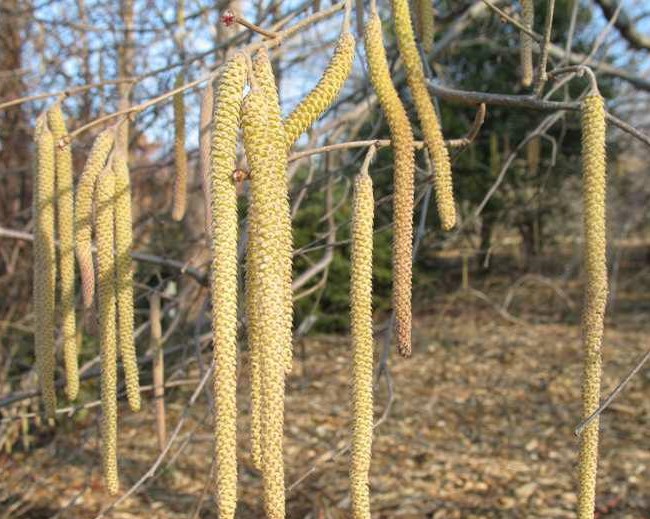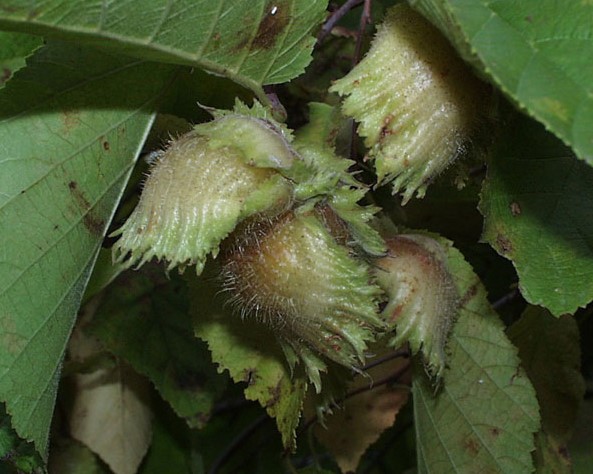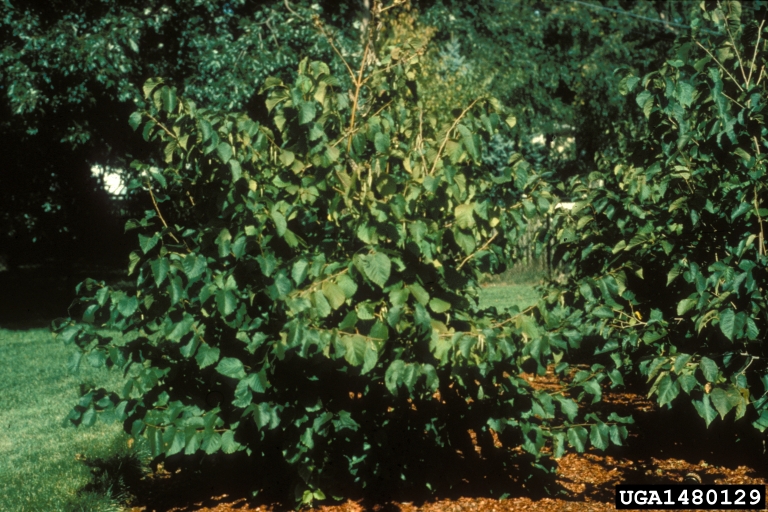10/1/2019
By: Dan Petters
American hazelnut (Corylus americana) is a native, multi-stemmed and often thicket forming shrub. It is very shade tolerant, but also succeds in full sun. It can be found in a variety of woodlands and woodland boundaries, savannahs, thickets, and prairies, usually on drier sites than the closely related Beaked Hazelnut (C. cornuta) where their ranges overlap. It grows from 4-16' in height, and can spread via rhizomes up to around 13' in width. Blooming in Minnesota from April to May, its male flowers are long catkins typical of the Betulaceae family, and its female flowers are small, red, and bud-like. They are separate, though both featured on the same branch (pictured below). Both beaked and American hazels produce round, 1/2" nuts that are encased in a leafy husk. They are edible and tasty (though smaller than comercially produced hazelnuts), and are an attractive browse to a wide variety of wildlife.
American Hazelnutis are tolerant of a variety of garden locations. It can do well in informal or naturalized plantings where it is allowed to spread, or its stems and suckers may be pruned to maintain a desired size or form, like for a screen or as a part of a shrub border. While subject to some minor pest problems, it has no major issues with insects or disease.
References:
American hazelnut. The Morton Arboretum. Accessed October 1, 2019. https://www.mortonarb.org/trees-plants/tree-plant-descriptions/american-hazelnut
Corylus americana. Minnesota Wildflowers. Accessed October 1, 2019. https://www.minnesotawildflowers.info/shrub/american-hazelnut
Corylus americana. Missouri Botanical Garden. Accessed October 1, 2019. http://www.missouribotanicalgarden.org/PlantFinder/PlantFinderDetails.aspx?kempercode=c350
Images:
Corylus americana, Missouri Botanical Garden.
Paul Wray, Iowa State University, Bugwood.org
Richard Webb, Bugwood.org


